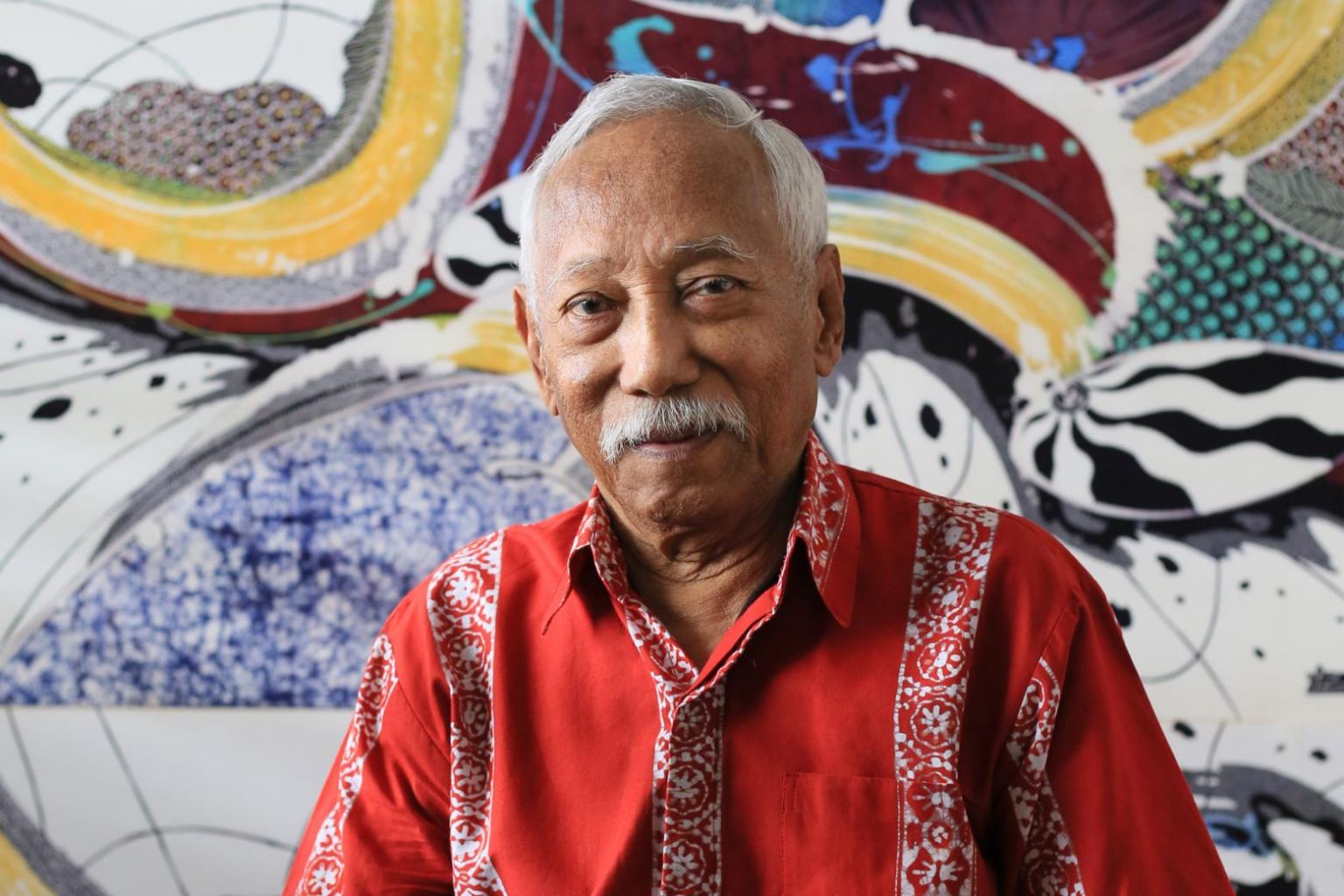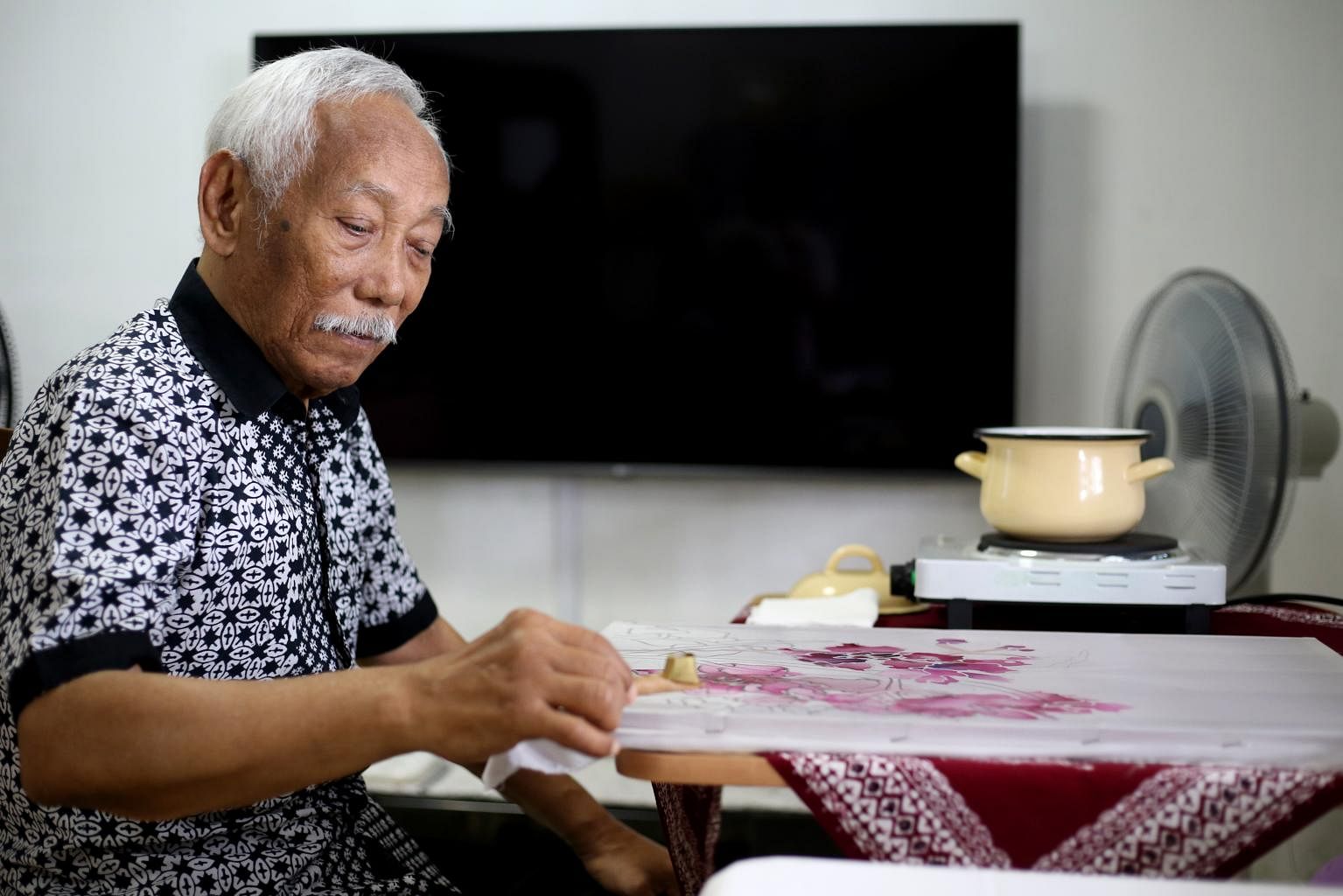Cultural Medallion batik artist Sarkasi Said, 81, dies from kidney failure
Sign up now: Get ST's newsletters delivered to your inbox

Mr Sarkasi Said used batik techniques in groundbreaking new ways to create contemporary art.
PHOTO: LIANHE ZAOBAO FILE
Follow topic:
SINGAPORE - Two weeks before his death at the age of 81, batik artist Sarkasi Said was still buying paints and attempting new mediums.
His daughter Imelda Zahry Sarkasi, 39, told The Straits Times: "He went to Bras Basah Complex to buy a new type of oil paint. My siblings carried him from the car to his wheelchair."
The Cultural Medallion recipient died at home on Thursday (Oct 14) evening of kidney failure. Ms Imelda said he passed peacefully at 9.55pm, with family around him.
The hardworking artist had finished the draft of a book about his life and works, and Ms Imelda said the last thing to do was to select photographs from his archive to accompany the text. He had also been planning a retrospective exhibition for early next year.
Sarkasi used batik techniques in groundbreaking new ways to create contemporary art. He made works in watercolour, for example, as well as huge abstract canvases with batik motifs.
In the 1970s, he became a household name when he created the orchid-inspired Singapore Dress, which he sold in his boutique Tzee Creations.
Prime Minister Lee Hsien Loong said in a Facebook post on Friday that he was "deeply saddened" at the death of Sarkasi, who designed several batik shirts for him to wear to national events.
He said the late artist was a pioneer of batik artworks who showcased his Singapore brand of art in many countries, including the United States, France, Japan, Brunei, and Indonesia. "One artwork that sported an orchid theme earned him the Guinness World Record in 2003 for the longest batik painting."
He added: "Pak Sarkasi never forgot his roots, and made every effort to groom the next generation of artists. He was committed to developing our local arts and culture scene."
President Halimah Yacob also expressed her condolences to his family in a Facebook post and said the baron of batik "will be remembered for his passion and determination in pursuing his craft".
Dr Bridget Tracy Tan, director of the Institute of Southeast Asian Arts & Art Galleries at the Nanyang Academy of Fine Arts, called him a "true artist of his genre".
"He looked upon batik as part of his heritage and history, something deeply embedded in someone's spirit and soul," she said. "He was also someone who felt that through his practice, he was sharing profoundly, stories and values of his culture to enrich and transform how people could appreciate life.
"Batik is a traditional medium that through Sarkasi's hands became a genre for the appreciation of life and living. He should not be seen only as an artist, but a man whose values shine through his art and transcend to colour our futures."
Malay Heritage Centre curatorial fellow Syed Muhammad Hafiz, 36, met with Sarkasi earlier this year and was struck by how his mind was still sharp. "Even though he was not as mobile, he was still thinking far ahead, specifically of publishing a book about Singapore batik.
"He felt that Singapore's batik story has often been overlooked, understandably, by our bigger neighbours, and he wanted to get the message out. He was still so vested in the batik medium and his role as an artist from Singapore."
The self-taught artist came from humble beginnings. In an interview with The Straits Times when he was awarded the Cultural Medallion last year, he recalled growing up carefree in a kampung and learning to appreciate nature.
He helped his grandmother sell batik for extra income and hawked art on the street. He dropped out of Beatty Secondary School at the age of 16 to pursue art full time and persisted despite challenges.
With little resources to spend on art, he scavenged for supplies, picking up twigs on the beach to make charcoal for sketching and rescuing discarded paint from garbage cans at Baharuddin Vocational Institute, where he taught.

In the interview, he credited his wife Salamah Ahmad for keeping the family going by making nasi lemak and epok epok (curry puffs).
Dr Tan noted that Sarkasi spent his resources in the pursuit of his practice: "He learned quickly to make artworks that he could sell and reinvested his money in himself by travelling around Malaysia and Indonesia to learn more about the communities and batik art."
Despite the financial hardship, Sarkasi shared his time and expertise freely, giving workshops at kindergartens and volunteering as an art teacher at a drug rehabilitation centre.
Dr Seng Yu Jin, 41, deputy director of curatorial and research at the National Gallery Singapore, said: "Sarkasi significantly elevated the appreciation of batik painting in Singapore, both as fine art and commercial craft, influencing numerous artists and engaging with communities through his batik workshops and experimentation in the medium."
Sarkasi is survived by his wife, four children and seven grandchildren. Ms Imelda added: "He found out recently he was going to be a great-grandfather and he was very happy."

